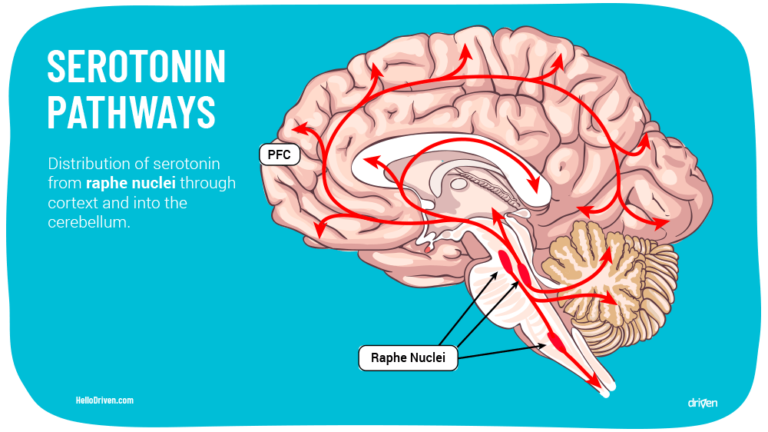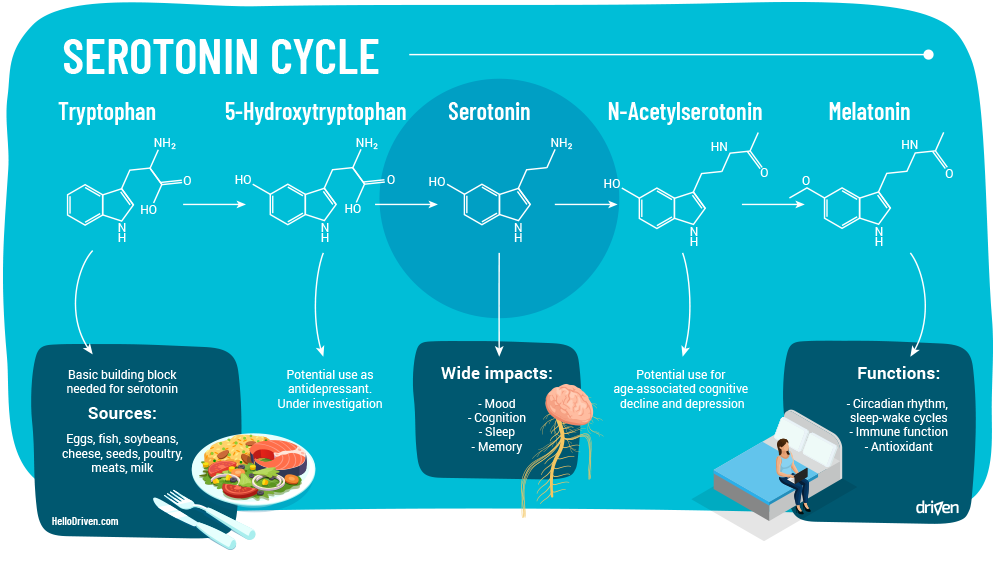Serotonin Pathway In Brain Photograph by Pikovit Science Photo Biology Diagrams An alternate pathway for serotonin exists in the pineal gland; it converts to melatonin. Serotonin originating from enterochromaffin cells is released into the portal circulation and undergoes rapid elimination from the plasma by way of uptake into platelets and liver metabolism. An estimated 90% of the serotonin in the human body is stored A serotonin pathway identifies aggregate projections from neurons which synthesize and communicate the monoamine neurotransmitter serotonin. [citation needed] These pathways are relevant to different psychiatric and neurological disorders. [1] [2] [3] Pathways. Pathway Group Origin [4] Projections

Serotonin acts as both a neurotransmitter and as a peripheral hormone. However, most 5-HT production occurs in the enterochromaffin (EC) cells of the intestinal mucosa. The gut is the largest endocrine organ in human body, and it produces almost 95% of all the serotonin. Certain brain cells do synthesize 5-HT. The synthesis and primary metabolic pathways of 5-HT are shown in Figure 13-5. The initial step in the synthesis of serotonin is the facilitated transport of the amino acid l-tryptophan from blood into brain. The primary source of tryptophan is dietary protein. Serotonin is a chemical that carries messages between nerve cells in the brain and throughout your body. Serotonin plays a key role in such body functions as mood, sleep, digestion, nausea, wound healing, bone health, blood clotting and sexual desire. Serotonin levels that are too low or too high can cause physical and psychological health

Biochemistry, Serotonin Biology Diagrams
It can signal to our brains when we're full, helping to prevent overeating. In the gut, where most of our body's serotonin resides, it aids in digestion and helps maintain gut motility. For example, serotonin interacts closely with Dopamine Production in the Brain: Pathways S. N. (2007). How to increase serotonin in the human brain Serotonin, or 5-hydroxytryptamine (5-HT), is a neurotransmitter with an integral physiological role in the human body; it regulates various activities, including behavior, mood, memory, and gastrointestinal homeostasis.[1][2] Serotonin is synthesized in the raphe nuclei of the brainstem and the enterochromaffin cells of the intestinal mucosa.[3][4]

New findings reveal that the brain's serotonin system - which regulates everything from our moods to our movements - is made up of multiple parallel pathways that affect the brain in
